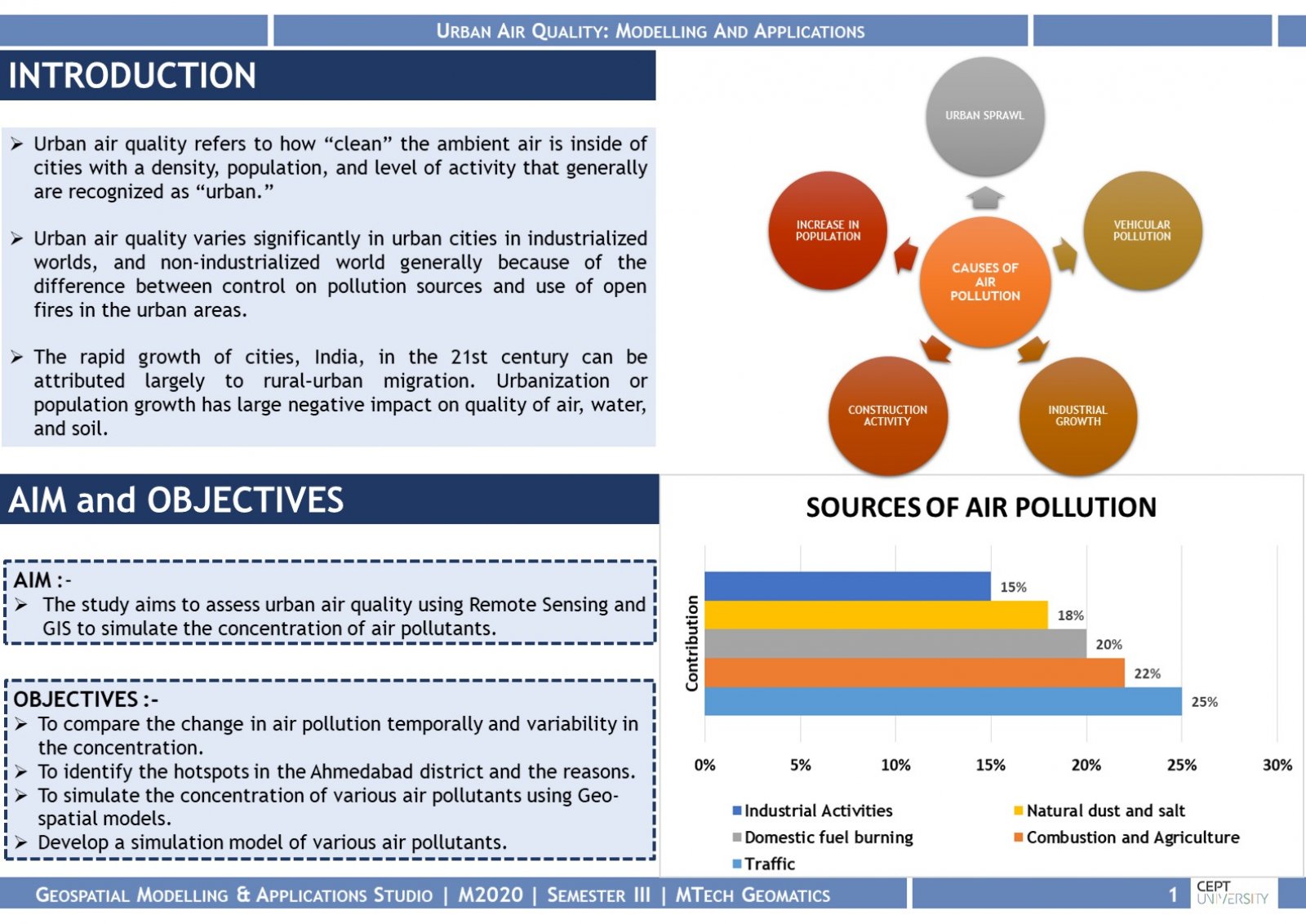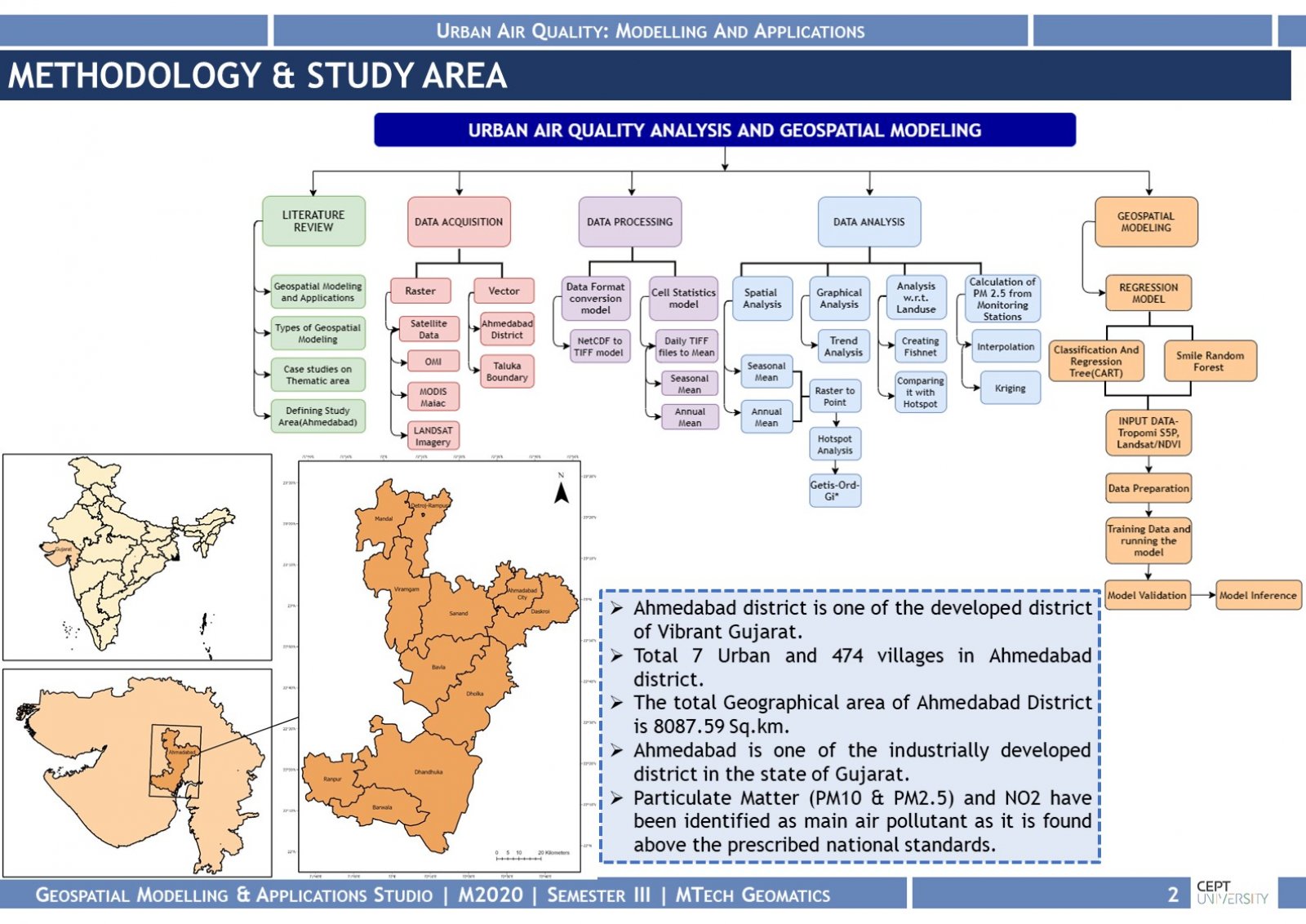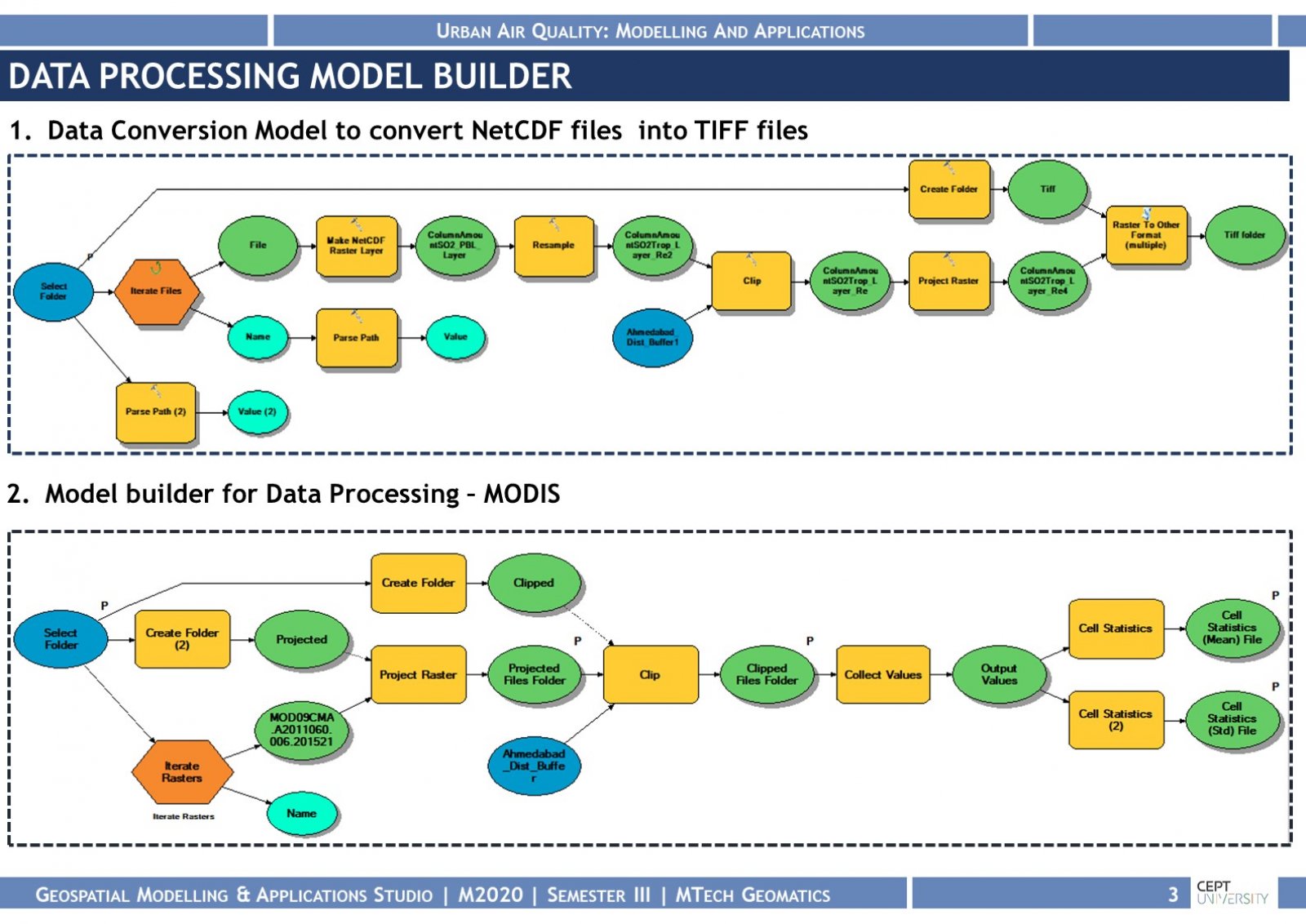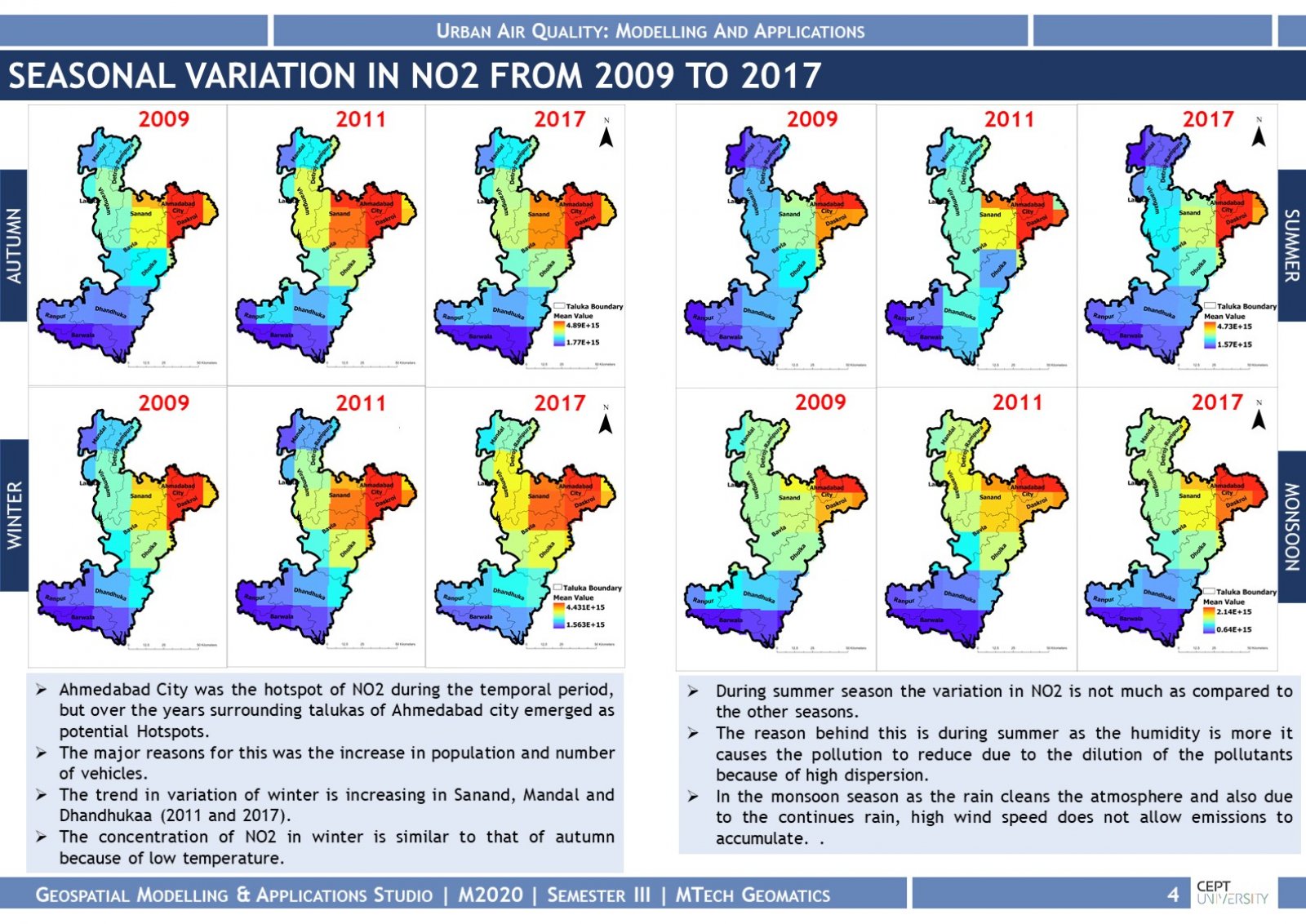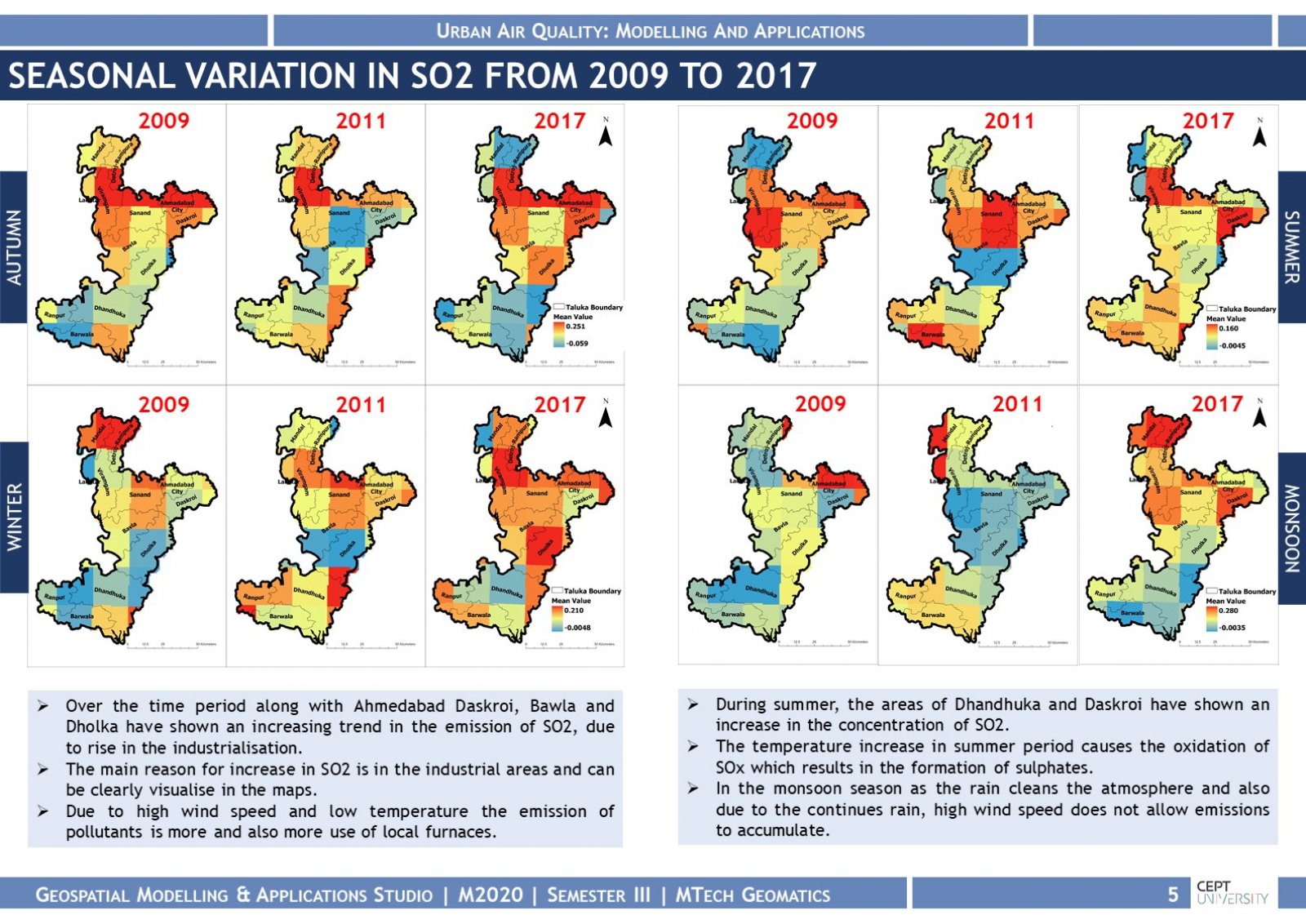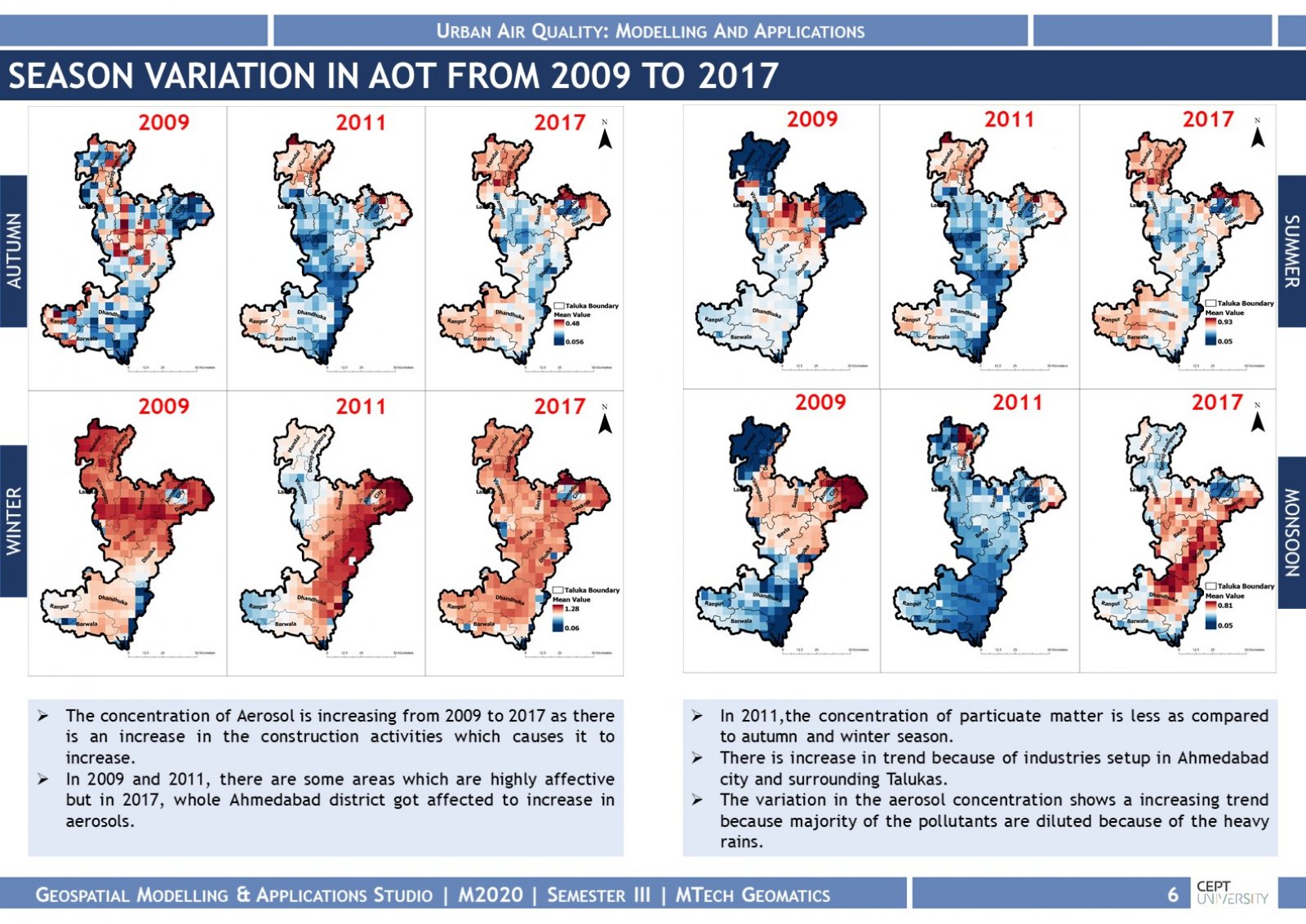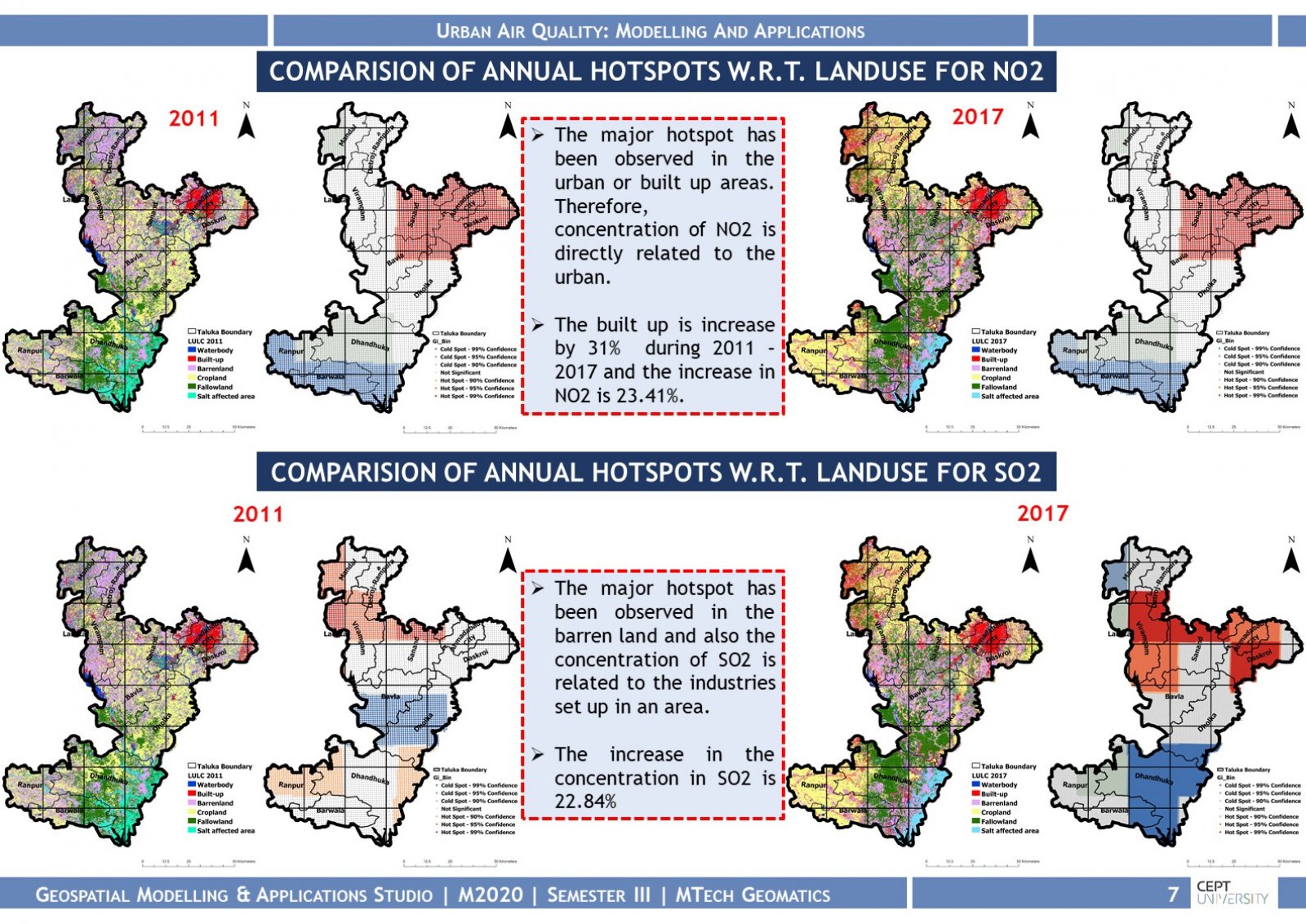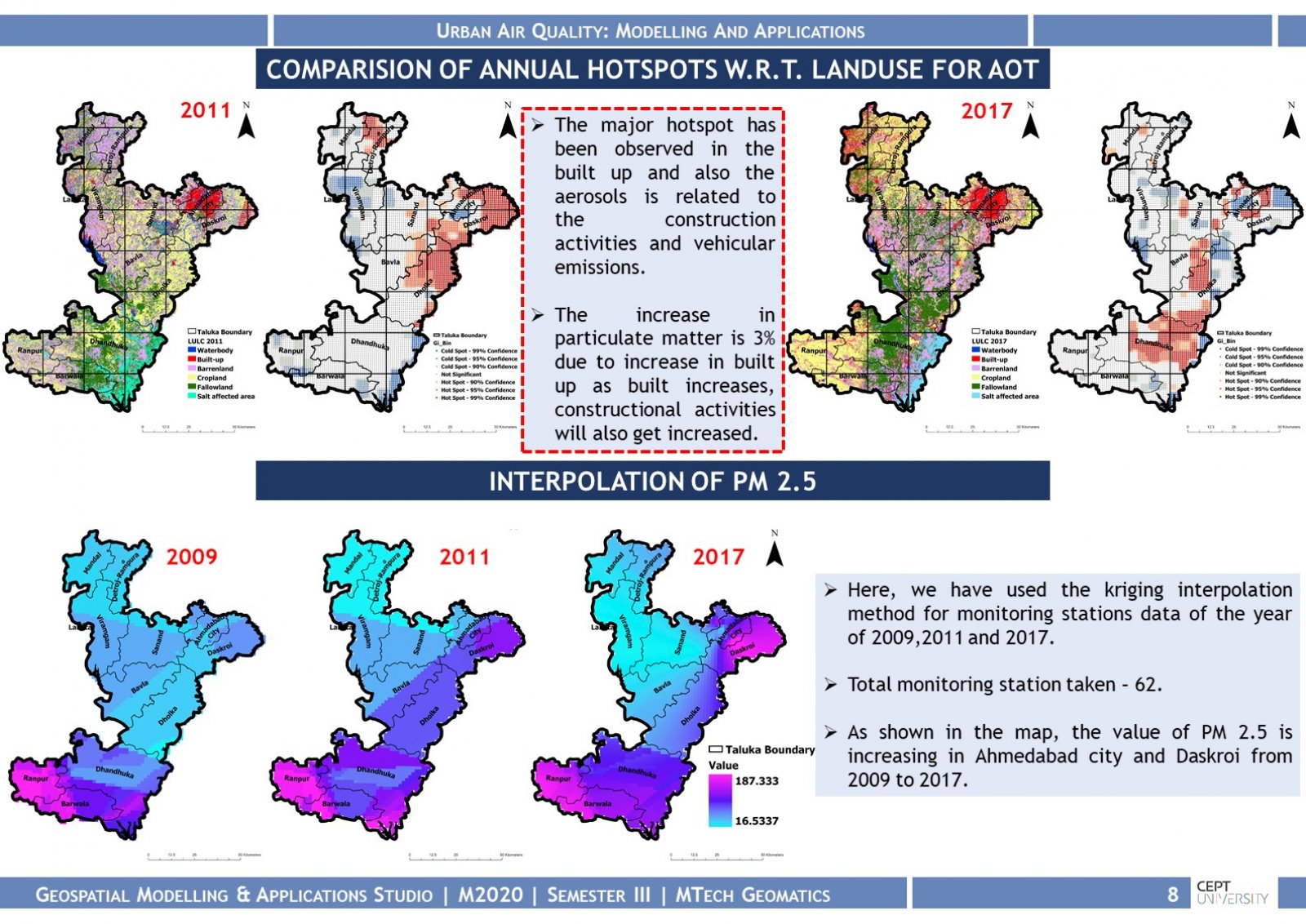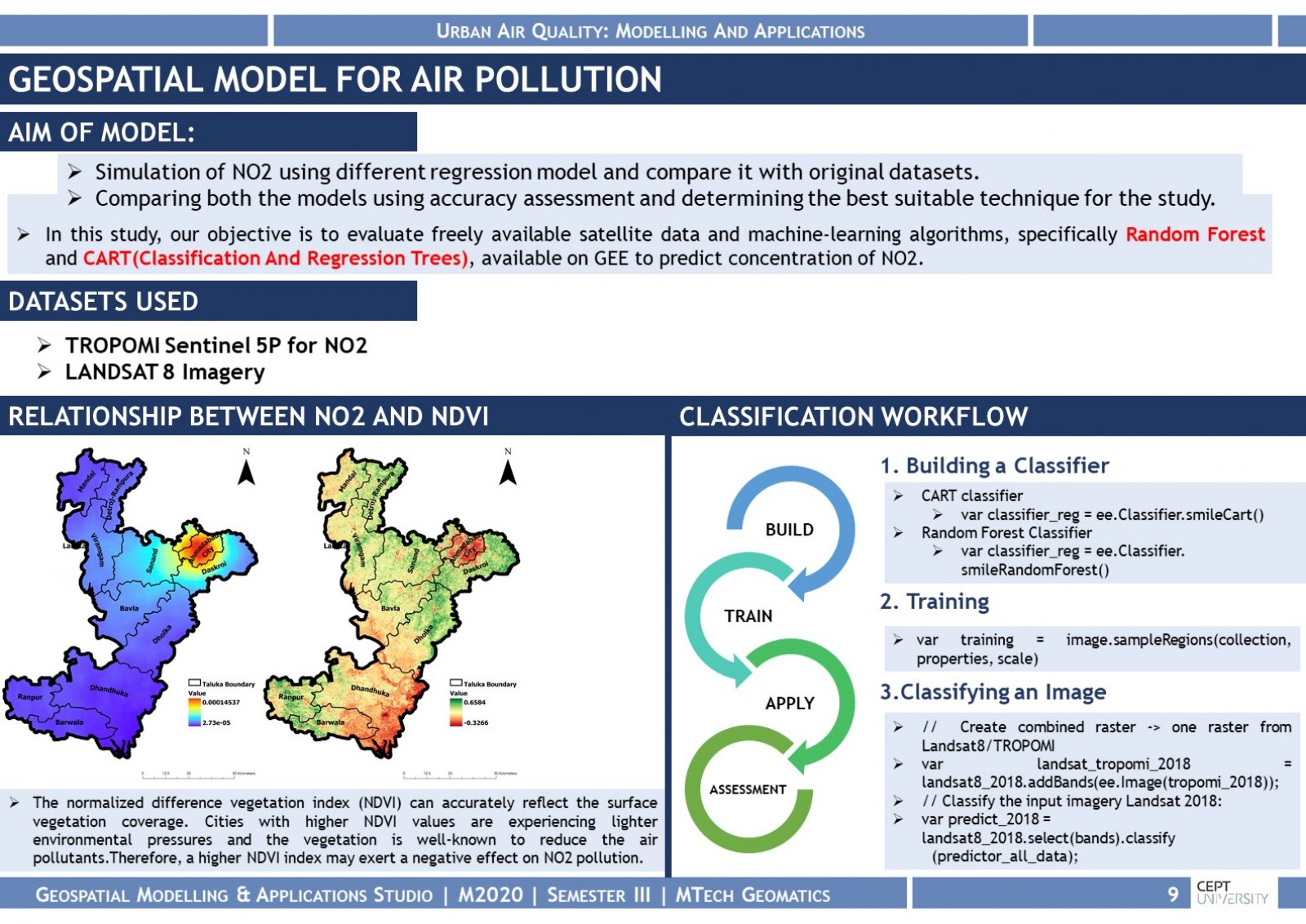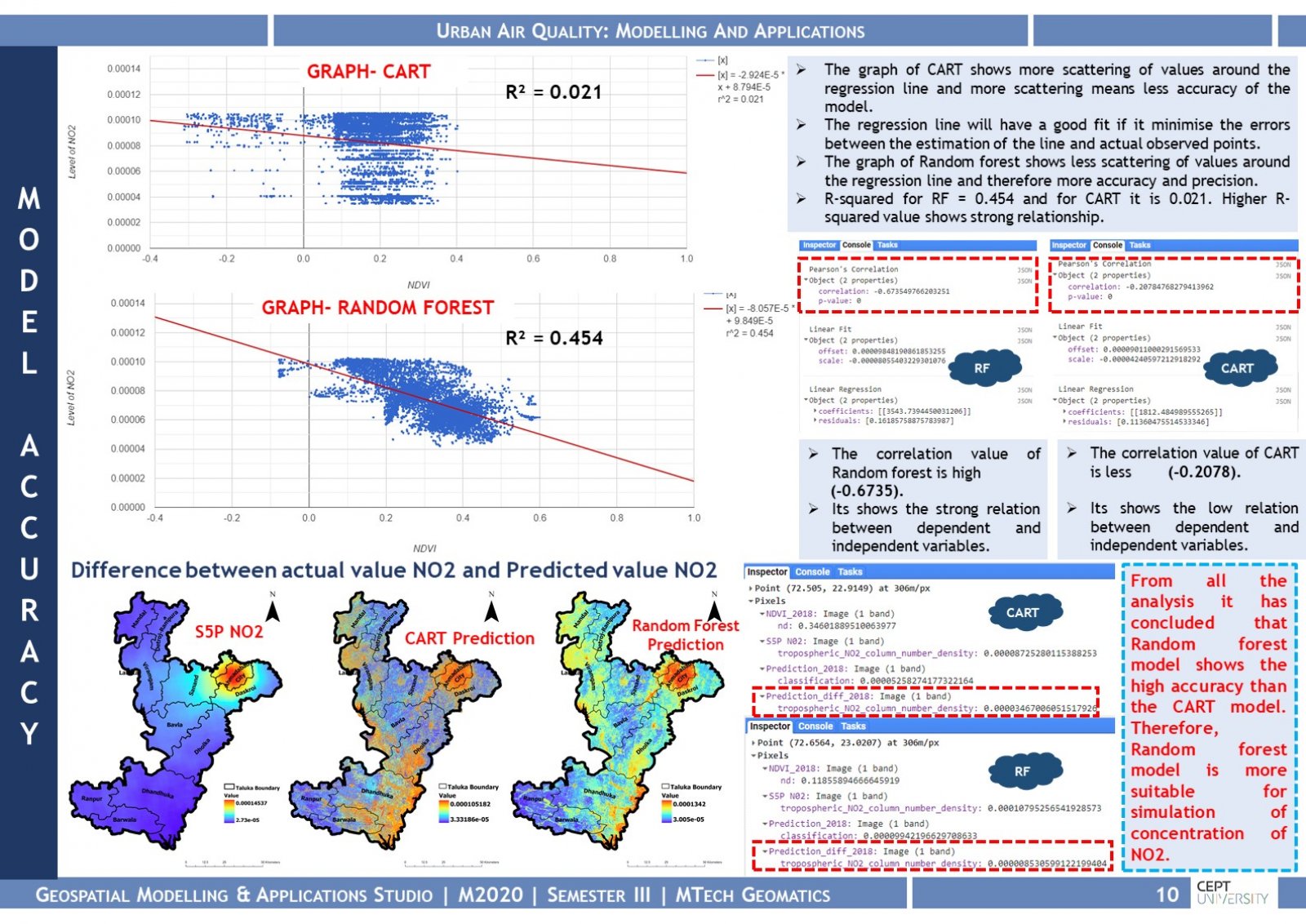Your browser is out-of-date!
For a richer surfing experience on our website, please update your browser. Update my browser now!
For a richer surfing experience on our website, please update your browser. Update my browser now!
Urban air quality varies significantly in urban cities in industrialized worlds, and non-industrialized world generally because of the difference between control on pollution sources and use of open fires in the urban areas. The rapid growth of cities, India, in the 21st century can be attributed largely to rural–urban migration. Urbanization or population growth has large negative impact on quality of air, water, and soil. The study aims to assess urban air quality using Remote Sensing and GIS to simulate the concentration of air pollutants and develop a simulation model of various air pollutants.
